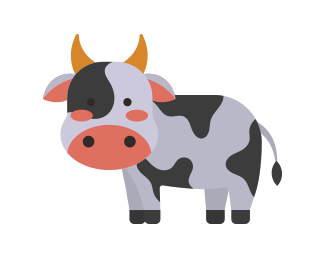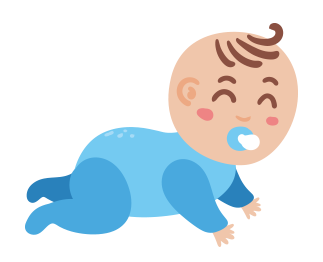Primitive Reflexes in Babies
Primitive reflexes are involuntary movements that are present in infants from birth. These reflexes gradually disappear as the baby matures and voluntary movements take over. The reflexes are remnants of our evolutionary past, serving as survival instincts that helped our ancestors respond to environmental stimuli e.g. the Moro reflex (startle reflex) helped infants cling to their mothers in precarious situations.
They play a crucial role in the development of the nervous system and muscles, developing neural pathways for motor skills. The presence or absence of primitive reflexes are also used as diagnostic tools to assess neurological development and function in infants.
Common Primitive Reflexes
- Rooting Reflex: When a baby's cheek is touched, they turn their head toward the touch and open their mouth, aiding in breastfeeding. This reflex typically disappears around 4 months of age.
- Sucking Reflex: When something touches a baby's lips, they automatically start sucking, which is important for feeding. This reflex is present from birth and gradually becomes more voluntary by 2 months of age.
- Moro (Startle) Reflex: This reflex is triggered by a sudden change in the position of the baby's head, a loud noise, or an abrupt temperature change. The baby responds by throwing back their head, extending their arms and legs, and then bringing them back in. This reflex typically disappears by 3 to 4 months of age.
- Grasping Reflex: When an object is placed in a baby's palm, they automatically grasp it tightly. This reflex helps in developing hand-eye coordination and typically disappears by 3 to 4 months of age.
- Plantar (Babinski) Reflex: When the sole of a baby's foot is stroked from heel to toe with your finger, the big toe extends upward and the other toes spread out. This reflex is present at birth and evolves into the normal plantar reflex by 1 to 2 years of age.
If primitive reflexes persist beyond the standard timeframes, it may indicate an underlying neurological issue. For example, the persistence of the Moro (Startle) reflex may be associated with motor and cognitive challenges, including attention deficit hyperactivity disorder (ADHD).
It is important for these reflexes to integrate into voluntary movements as your baby grows. If you have concerns about your baby's reflexes or development, don't hesitate to consult your pediatrician.






